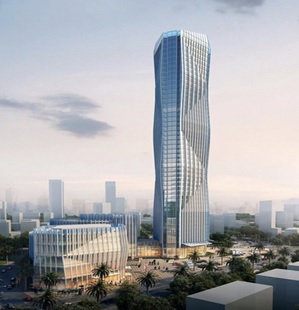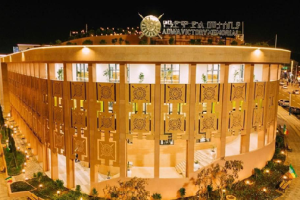
Part I
BY MULUGETA GUDETA
Architecture is generally defined as, “the art and technique of designing and building, as distinguished from the skills associated with construction. The practice of architecture is employed to fulfill both practical and expressive requirements, and thus it serves both utilitarian and aesthetic ends.”
A few years back, Addis Ababa’s newly rising skyscrapers were the subjects of criticisms by architects as well as lay people. Most of the criticisms centered not on the architectural aspects of the Ethiopian capital based on objective and scientific studies. The criticisms were merely opinions or subjective attitudes and feelings expressed by people who were either attracted or repelled by the city’s new buildings.
Addis Ababa is described by the Encyclopedia Britannica as a city that was founded as “the capital in 1887 because of the unsatisfactory location of the former capital, Entoto. Addis Ababa was the capital of Italian East Africa 1935–41. It has become the national center for higher education, banking and insurance, and trade. Several international organizations have their headquarters there, including the African Union headquarters.
It is quite obvious that Ethiopia is a land of ancient architectures as proved by the ancient churches, castles and monuments of Axum, Gondar and Lalibela to name but a few of them. “They mark the location of the heart of ancient Ethiopia, when the Kingdom of Aksum was the most powerful state between the Eastern Roman Empire and Persia. The massive ruins, dating from between the 1st and the 13th century A.D., include monolithic obelisks, giant stelae, royal tombs and the ruins of ancient castles.”
Ordinary citizens may think that modern buildings are the only structures that Ethiopians built. However, “The most famous example of Ethiopian rock-hewn architectures is the 11 monolithic churches of Lalibela, carved out of the red volcanic tuff found around the town.”
According to one description, “The typical northern Ethiopia ancient housing structure consists of mud- or lime-plastered stone walls interspersed with dressed beams. Square or rectangular in form, the monumental structures stood on high-stepped granite podia with paved floors. While the temples were for the worship of God, the churches were for mass and the sabbath, the pillars recorded important victories and achievements. And it was believed that spirits existed in animals, plants, other natural objects, and natural forces.”
Ethiopians did not however manage to use this rich architectural tradition to feed the ideas of architectural modernization or establish a new tradition simply because of the domination of European and Western architectural notions and styles. Ethiopians have a rich tradition of building amazing structures but they did not base their works on the Axum, Lalibela or Gondar building traditions and designs that have become the wonders of the entire world, attracting tens of thousands of tourists and researchers every year.
To begin with, so-called modern buildings are not quite often invented by Ethiopians but copied from other countries and other architectural traditions. While most big cities in the Western world managed to preserve their old buildings and used them as models for modern structures, Ethiopian designers have not yet managed to bring their old traditions to life in their modernization drives.
Another idea that requires more in depth analysis may be our conception of modernization in connection with Addis Ababa in particular because Addis represents a sample or a model of modernizing city. Our idea of modernization is exclusively based on the proliferation of high rise buildings, broad avenues and overhead passes. These features are also the marks of a modern city anywhere in the world. But they are not the whole story. What make a city modern are also “roads of a better quality and well-built houses in urban areas, transport facilities that are highly developed and often receive regular funding for updates. It can be faster to get from place to place in a modern city or town. Most amenities and entertainments are easy to reach.”
If we try to evaluate Addis Ababa by using these criteria, we may be disappointed in many areas of urban housing, transport facilities, the ease of moving from one place to another within the city as well as in the availability of urban health and sanitary facilities as well as healthy entertainment outlets such as museums, libraries and the like. Addis Ababa has amazing high rises and road networks but it lacks such elementary facilities as public toilets. Many residents are still using backstreets and or street corners as well as ditches and holes in the streets as places for peeing or defecating.
This may not be a pleasant statement; but facts cannot be hidden by ignoring them. Many neighborhoods in Addis lack not only cleanness but are also smelling bad because of a defecting garbage collecting system and a very careless citizens who throw garbage right into the streets or in the sewer systems that are often clogged in the rainy seasons and produce some of the cataclysmic inner-city floods and traffic nightmares.
There are many inner-city rivers in Addis that flow in all directions but are not properly managed. Old houses are hanging on the cliffs of the elevated terrain above the rivers and this is a recipe for disaster as the floods might lead to soil erosion and the collapse of many residential houses. These are some of the headaches the city government is currently dealing with although success is not yet fully visible in the horizon.
The Ethiopian Herald April 9/2022




